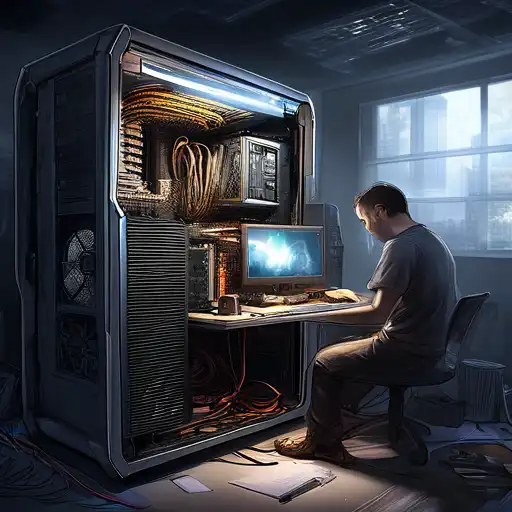Introduction to PC Building
Building your own PC can be a rewarding experience, offering both personal satisfaction and the opportunity to customize your machine to your exact needs. Whether you're a gamer, a content creator, or just someone looking for a powerful workstation, assembling your own computer allows you to select each component for performance, aesthetics, and budget.
Why Build Your Own PC?
There are several advantages to building your own PC over buying a pre-built one. You can save money, get better performance for your budget, and have the freedom to upgrade components as needed. Plus, it's a great way to learn about how computers work.
Essential Components for Building a PC
Before you start, you'll need to gather all the necessary components. Here's a list of the essential parts:
- Processor (CPU)
- Motherboard
- Memory (RAM)
- Storage (SSD or HDD)
- Power Supply (PSU)
- Case
- Graphics Card (GPU) - if not integrated into the CPU
- Cooling System
Step-by-Step Guide to Assembling Your PC
Now that you have all your components, it's time to put them together. Follow these steps to assemble your PC:
- Prepare your workspace and ensure you have all the necessary tools.
- Install the CPU onto the motherboard carefully, aligning it correctly.
- Install the RAM into the designated slots on the motherboard.
- Mount the motherboard inside the case.
- Install the power supply and connect it to the motherboard and other components.
- Install your storage devices and connect them to the motherboard.
- If you're using a dedicated GPU, install it into the appropriate slot on the motherboard.
- Connect all necessary cables, including those for power, data, and case fans.
- Close the case and connect your monitor, keyboard, and mouse.
- Power on your PC and install your operating system.
Tips for First-Time Builders
Building a PC for the first time can be daunting, but here are some tips to help you through the process:
- Take your time and don't rush the assembly process.
- Refer to the manuals that come with your components for specific instructions.
- Use an anti-static wristband to prevent damaging your components with static electricity.
- Ensure all components are compatible with each other before purchasing.
- Consider watching tutorial videos or reading guides for additional help.
Conclusion
Building your own PC is an exciting project that can save you money and give you a deeper understanding of how computers work. By carefully selecting each component and following the assembly steps, you can create a machine that's perfectly tailored to your needs. Remember, patience and preparation are key to a successful build.
For more information on selecting components, check out our component guide.
